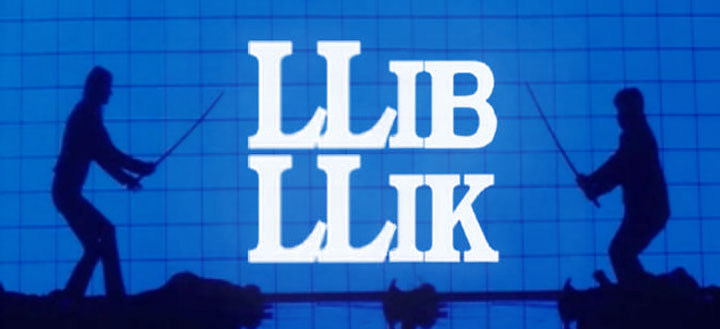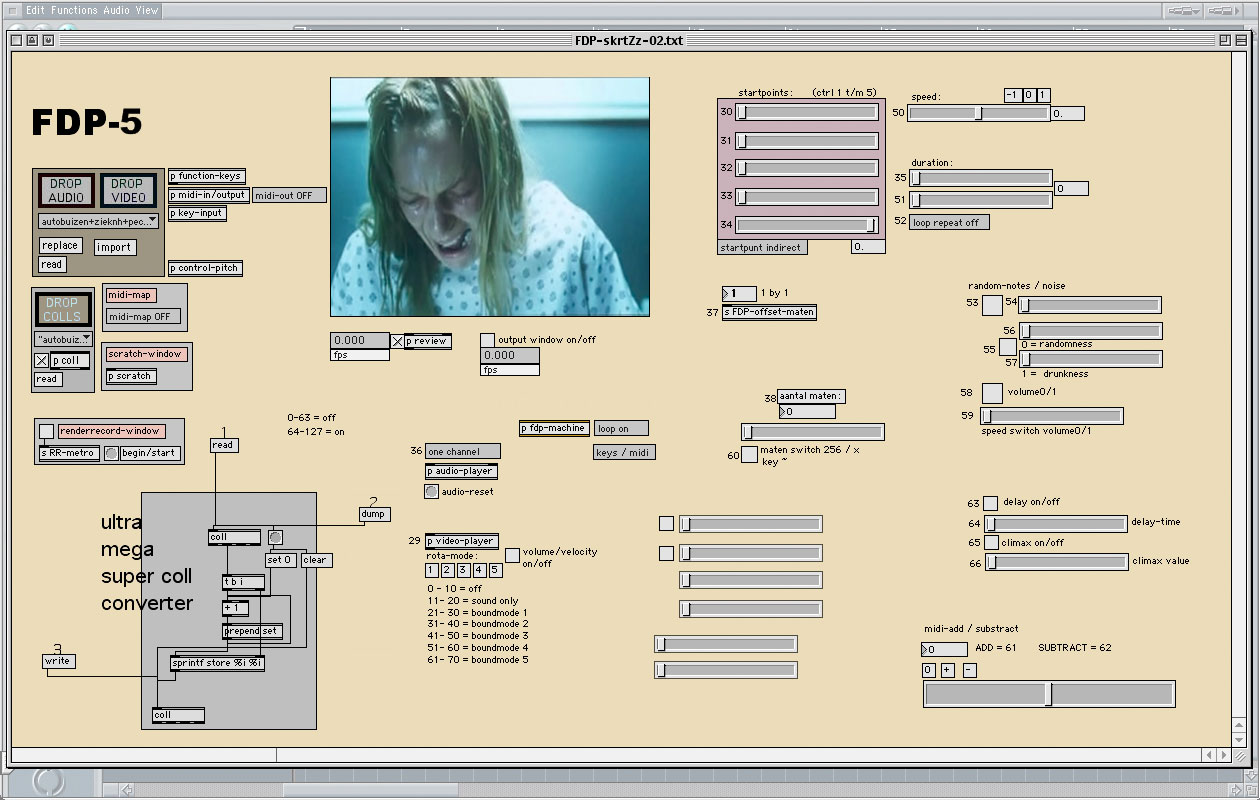In 2004 I remixed the entire movie Kill Bill Vol. 1 together with my friend Peter Kardolus. From the opening credits all the way to the closing credits. I challenged us to create completely new tracks by only re-editing the movie. Few effects, few layers. Just re-ediing. Very similar to the DVJ 3.0 project, but with a movie. For this we used the Frame Drummer Pro 5 and for the visual effects I used the DVJ Mixer.
Production concept
In the tracks we let the flow of the movie scene determine the flow of the track. We just ‘walked through the scene’ remixing anything that came in our way. This way the dramatic structure of the scene remained intact. When the actions in the scene are relaxed and introvert (e.g. crying on bed, sitting in the car, making coffee, soft dialogue) the visual rhythms are relaxed and introvert. When the actions in the scene are aggressive and wild (e.g. shooting, shouting, slamming the door, sword fighting) the visual rhythms are agressive.
Software
The tracks are semi-automatically generated, to make ‘walking through a scene’ easier. For this we used the ‘EboLyzer’ and the AGT (Accent Grab technology). The EboLyzer analyzed the character of the audio track and filtered out points that sound like a Bass-drum, snare-drum or percussion/hi-hat. This information was then used by the AGT to automatically create a rhythmic video edit based on a MIDI sequence live. Changing the position in the movie scene, the amount of filtered points and the way the MIDI sequence was interpreted resulted in a new video edits. This is an intuitive way to create audio-visual grooves, beats and skrtZzes. Even without changing the MIDI pattern and only changing the position in the video, moving from start to end, results in interesting rhythms and grooves. Walking through the scene makes the tracks tell a story and give them a clear dramatic flow.
Copyleft
The tracks have clearly their own original identity, different from the original movie scenes. But the Spartan working method (just re-editing) raises questions about the copyrights: how can you assess the added value of the remix artist and what is the relationship of the rights of the remix artist to those of the producer of the source material? Quentin Tarantino ‘borrowed’ a great deal from Asian cinema (in particular from Lady Snowblood by Toshiya Fujita) for the production of his film, but has never been called to account for this. As a sample artist, I would (probably) be presented with a hefty ‘bill’ if I were to offer my LLib LLik compositions for sale.
Full movie
Scenes
Live
in 2006 I performed the Headbanger scene live with my SenSorSuit in Arnhem, the Netherlands.
In 2004 I performed the Hospital scene live in Paris, France. All video beats and skrtZzes are performed live using the AGT and sequencer of the Frame Drummer Pro 5. SkrtZzes are done with the skrtZz pen.
I performed the Hospital scene live with the Riciotti Ensemble in 2008. The percussionist triggered the video beats live and I did the skrtZz solos live with my SenSorSuit.
In 2005 I performed part of the movie at the Black Soil festival in Rotterdam, the Netherlands.



